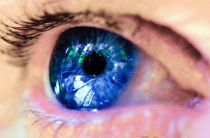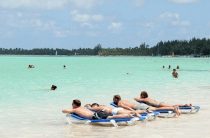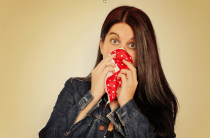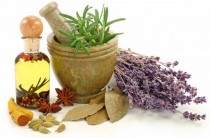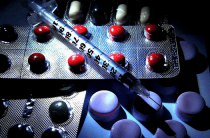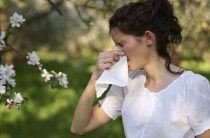Cold allergy is one of the many negative responses of the body to the influence of low temperature. Many representatives of medicine in every possible way rejected such a diagnosis, because there is no allergen, as such, in principle. Only all kinds of allergic manifestations appear under the influence of cold. And for a long time it was believed that if there is no allergen, there is no allergy. This pathological disease is more common in women than in men. Therefore, for many, such a wonderful time of the year as winter, with its snow-covered streets and trees, is a real hard labor and torture.
cold allergy symptoms
An allergy to cold can have absolutely any manifestation. The most common symptomatology is:
- Hives;
- Bronchospasm;
- Quincke's edema;
- Rhinitis and conjunctivitis;
- Anaphylactic shock.
Cold urticaria, as a rule, appears on those parts of the body that are open and in contact with air or cold water: hands, face, neck. At first, the skin begins to be slightly reddened and itchy. Over time, pain begins to appear, and blisters form on the surface of the skin. Urticaria resulting from an allergy to cold can not only affect the area in contact with cold, but also spread throughout the body. If peeling is also added to all these symptoms, then cold dermatitis has arisen. For rhinitis, abundant discharge from the nasal cavity is characteristic, but when the cause of the cold is eliminated (by entering a warm room), the runny nose immediately disappears. The same applies to conjunctivitis - lacrimation and itching of the eyes appear only when going outside at low air temperatures.
All the symptoms of an allergy to cold begin with a banal reddening of the skin. Then some swelling and a general sluggish state of the body are formed. Patients may complain of hoarseness in the voice and sore throat. Nausea and dizziness may occur. In severe cases, an allergy to cold can lead to loss of consciousness and anaphylactic shock. All manifestations may be accompanied by a decrease in blood pressure.
Causes of cold allergy development
The main reason for the appearance of an allergy to cold is a violation in the functioning of the immune system. And the factors that lead to such a violation can be quite diverse. A number of diseases that can trigger the development of cold allergies:
- Prolonged viral and infectious diseases;
- Problems in the work of the gastrointestinal tract and biliary tract;
- liver dysfunction;
- Cancer;
- Malfunctions of the thyroid gland;
- sinusitis;
- Cholecystitis;
- Violations in the work of mast cells;
- Intoxication of the body;
- Other types of allergies.
Some scientists argue that all manifestations of cold allergy are pseudo-allergic reactions. They believe that at all stages of the manifestation of symptoms, the immune system is not involved in any way, and does not reduce its activity.
cold allergy treatment
Before starting treatment, it is necessary to diagnose the disease. This is quite difficult to do, since an allergy to cold is extremely rare. Such a diagnosis is established by excluding other, more common types of allergies. Therefore, it will be necessary to undergo a lot of tests and skin tests, take a blood test. Based on the information collected, the allergist will be able to refute the disease or make sure of it.
At the initial stage of allergy treatment, it is necessary to eliminate its main cause - cold. If it is impossible to avoid low air temperatures, you should carefully protect your skin from contact with it. Drug treatment involves the use of various means, depending on the symptoms. A prerequisite is the use of antihistamines, since the disease is allergic in nature. Such funds block and stop the penetration and production of histamine in the cells, which allows you to remove some of the manifestations of cold allergies. There are three generations of them, the last of which is the most used, as it has fewer contraindications and adverse reactions. Also, such drugs are selected depending on age indicators. We note the following of them:
| Erius | The drug has antipruritic and anti-inflammatory properties. Used for various types of allergies. Effective in Quincke's edema. In the form of tablets, it is allowed for children from 12 years of age. If you use syrup, then it has been used since 1 year. |
| Tavegil | The remedy is prescribed to relieve any allergic reaction. Among the contraindications can be found disorders of the lower respiratory tract, pregnancy, the age of children under 6 years of age, liver dysfunction. Sometimes there are such adverse reactions as nausea, dizziness, drowsiness, general weakness of the body. |
| Loratadine | Eliminates urticaria, rhinitis, angioedema. Removes other, even pseudo-allergic reactions. Among the contraindications, only pregnancy and early childhood are observed. |
| clemastine | When using the drug, drowsiness and a decrease in the severity of coordination may occur. Also often there are violations of the gastrointestinal tract. But the drug has a high speed, eliminates itching and inflammation of the skin. |
| Suprastin | The drug belongs to the first generation. Suitable for everyone at any age. Children are used already in the first month of life. But it does not have a long duration of action, so you need to use it several times a day. |
To quickly relieve hives or dermatitis that has arisen against the background of an allergy to cold, you need to use creams and ointments. They are hormonal and non-hormonal. Hormonal ointments are used only in cases where other treatments do not give the desired effect. They have a high degree of activity. From the first minutes, the result will be noticeable. But their long-term use is prohibited, as addiction occurs. Also, the active components quickly penetrate the skin and are absorbed into the blood, which can affect the hormonal background of the patient's body. Among them are the following:
- Advantan;
- Elocom;
- Flucinar;
- Beloderm;
- Soderm.
Ointments on a non-hormonal basis do not have any detrimental effect. Allowed to use for a long period of time. They have a cooling effect, so they quickly relieve itching and burning of the skin with cold urticaria. Among them, the following deserve attention:
- Fenistil;
- Skin Cap;
- Bepanthen;
- La Cree;
- Nezulin;
- Psilo Balm.
Since one of the symptoms of a cold allergy is bronchospasm, it is necessary to take drugs such as bronchodilators. They help to relax the walls of the bronchi. These funds are available in different forms, but most often aerosols are used for convenience and speed:
- Ipradol;
- Salbumator;
- Fenoterol;
- Troventol;
- Salmeterol.
If severe shortness of breath occurs, inhalers are contraindicated. Then pills will come to the rescue. They are better absorbed into the blood and distributed throughout the body of the patient. These tablets include Theophylline, Eufillin, Teopek, Retafil.
